Volume 24, Issue 1
Displaying 1-14 of 14 articles from this issue
- |<
- <
- 1
- >
- >|
-
1998Volume 24Issue 1 Pages 2-7
Published: October 01, 1998
Released on J-STAGE: March 16, 2010
Download PDF (1072K) -
1998Volume 24Issue 1 Pages 10-20
Published: October 01, 1998
Released on J-STAGE: March 16, 2010
Download PDF (1249K) -
1998Volume 24Issue 1 Pages 21-26
Published: October 01, 1998
Released on J-STAGE: March 16, 2010
Download PDF (821K) -
1998Volume 24Issue 1 Pages 27-34
Published: October 01, 1998
Released on J-STAGE: March 16, 2010
Download PDF (1401K) -
1998Volume 24Issue 1 Pages 35-41
Published: October 01, 1998
Released on J-STAGE: March 16, 2010
Download PDF (787K) -
1998Volume 24Issue 1 Pages 42-48
Published: October 01, 1998
Released on J-STAGE: March 16, 2010
Download PDF (998K) -
1998Volume 24Issue 1 Pages 49-55
Published: October 01, 1998
Released on J-STAGE: March 16, 2010
Download PDF (3024K) -
1998Volume 24Issue 1 Pages 56-62
Published: October 01, 1998
Released on J-STAGE: March 16, 2010
Download PDF (837K) -
1998Volume 24Issue 1 Pages 63-69
Published: October 01, 1998
Released on J-STAGE: March 16, 2010
Download PDF (673K) -
1998Volume 24Issue 1 Pages 70-78
Published: October 01, 1998
Released on J-STAGE: March 16, 2010
Download PDF (887K) -
1998Volume 24Issue 1 Pages 79-88
Published: October 01, 1998
Released on J-STAGE: March 16, 2010
Download PDF (1427K) -
1998Volume 24Issue 1 Pages 89-90
Published: October 01, 1998
Released on J-STAGE: March 16, 2010
Download PDF (1941K) -
1998Volume 24Issue 1 Pages 91
Published: October 01, 1998
Released on J-STAGE: March 16, 2010
Download PDF (77K) -
1998Volume 24Issue 1 Pages 92-97
Published: October 01, 1998
Released on J-STAGE: March 16, 2010
Download PDF (12507K)
- |<
- <
- 1
- >
- >|
